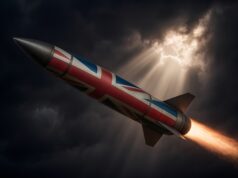Four QinetiQ T6 Gridded Ion Thrusters will power two science orbiters – the Mercury Planetary Orbiter and Mercury Magnetospheric Orbiter – on their seven year journey to gather more knowledge about Mercury.
The QinetiQ SEPS, say the firm, is the most powerful and high-performance electric propulsion system ever flown.
“Its super-efficient T6 thrusters enable the spacecraft to reach maximum speed with minimal fuel consumption, using electricity generated by solar panels to produce charged particles from xenon gas.
A beam of these charged particles, or ions, is then expelled from the spacecraft to propel it forward. The thrusters will be used for interplanetary travel, running in pairs in order to share the workload.”
The BepiColombo spacecraft left Earth on the 20th of October aboard an Ariane 5 and the engines were first powered up on the 16th of November to undergo testing, the first time the engines had been fired in space. According to a release:
“Each thruster was brought to life, warmed up, and then taken to full power individually – a force of 125 millinewtons (mN) – and then in pairs. This week saw the QinetiQ SEPS begin the first of the 22 planned ion thrust arcs that will steer BepiColombo on its interplanetary trajectory.”
Peter Randall, QinetiQ’s Systems Engineer – Electric Propulsion, said:
“The development of the SEPS system powering the mission to Mercury is a brilliant example of what British engineering can achieve, in collaboration with partners from Europe and the US. Together, we have changed the way we travel in space.
We’re pleased to say that all four thrusters survived the launch and are operating perfectly in flight, performing well within expectations, and ready to start their important work.”
The high-tech electric propulsion system is a significant space engineering achievement, which is making a major contribution to one of the most advanced and ambitious missions ever launched. Developed by a British-led multinational team, the consortium includes world-class engineers from Bradford Engineering in the Netherlands and CRISA in Spain, and worked with Airbus at Stevenage, responsible for integrating the engines into the spacecraft.














Good to see the UK tech in action.
Ion Drives are a great British invention that most people probably have never heard of.
So is the Huff-n-Fluffa Valve, and not a lot of people know that either.
So is the Guillotene, people think it’s french but it’s actually a British invention… And the light bulb was a British invention that the yanks like to take credit for! It was on public display in the Uk ten months before Thomas Edison in USA said he invented it. I even argued with a yank the other day when he said USA invented the computer, internet, TV, Radio!! All are British!….
Actually the Internet is an American invention. The web is a British Invention.
No. Packet switching started in Britain.
All you need is another character to explain that in layman terms….
‘just like trying putting diesel in a petrol combustion engine’….
‘exactly’
‘make it so’
Surely all this can be solved by reversing the polarity?
No Captain, she’ll nay take it!!
The space industry is a gem in the crown of British engineering that too few people are aware of. I believe over half the world’s satellites are designed and built here amongst other notable achievements like the Ion drive
Good news!
Not if you reroute the power to the plasma conduits….
There’s Klingons on the Starboard Bow.
I canna change the laws of physics, captain.
How much of the Galileo’s are ours?
As the engines eject charged particles for thrust, what happens to the gradual build-up of opposite charge on the spacecraft. Anyone know for sure?
After the positive ions have been accelerated by the electric field the electrons that were stripped out at the start of the process are re-injected into the gas so that when it actually exits the thruster it is neutral again hence so is the spacecraft itself.
Thanks for the explanation. Now all I have to do is understand it. I just don’t see how you can permanently get rid of cations without a compensatory reduction of anions(electrons).
I’ll do some reading on my own.
The anions are created from the neutral gas. That’s the key. The propellant that is loaded is neutral, an electric field is then used to strip off electrons to create the ionised gas (cations) to be injected into the acceleration field. The electrons stripped off do not go through the acceleration chamber but are fed separately to an electron injector positioned near the exhaust where they are then spat out into the ionised gas to recombine and create a neutral gas again. No charge-carrying elements are created or destroyed, they are simply temporarily separated from each other to create anions and cations and then recombined after there is no further need for polarisation. Or at least that’s how I understand it.
It appears you are correct Julian. Good description.